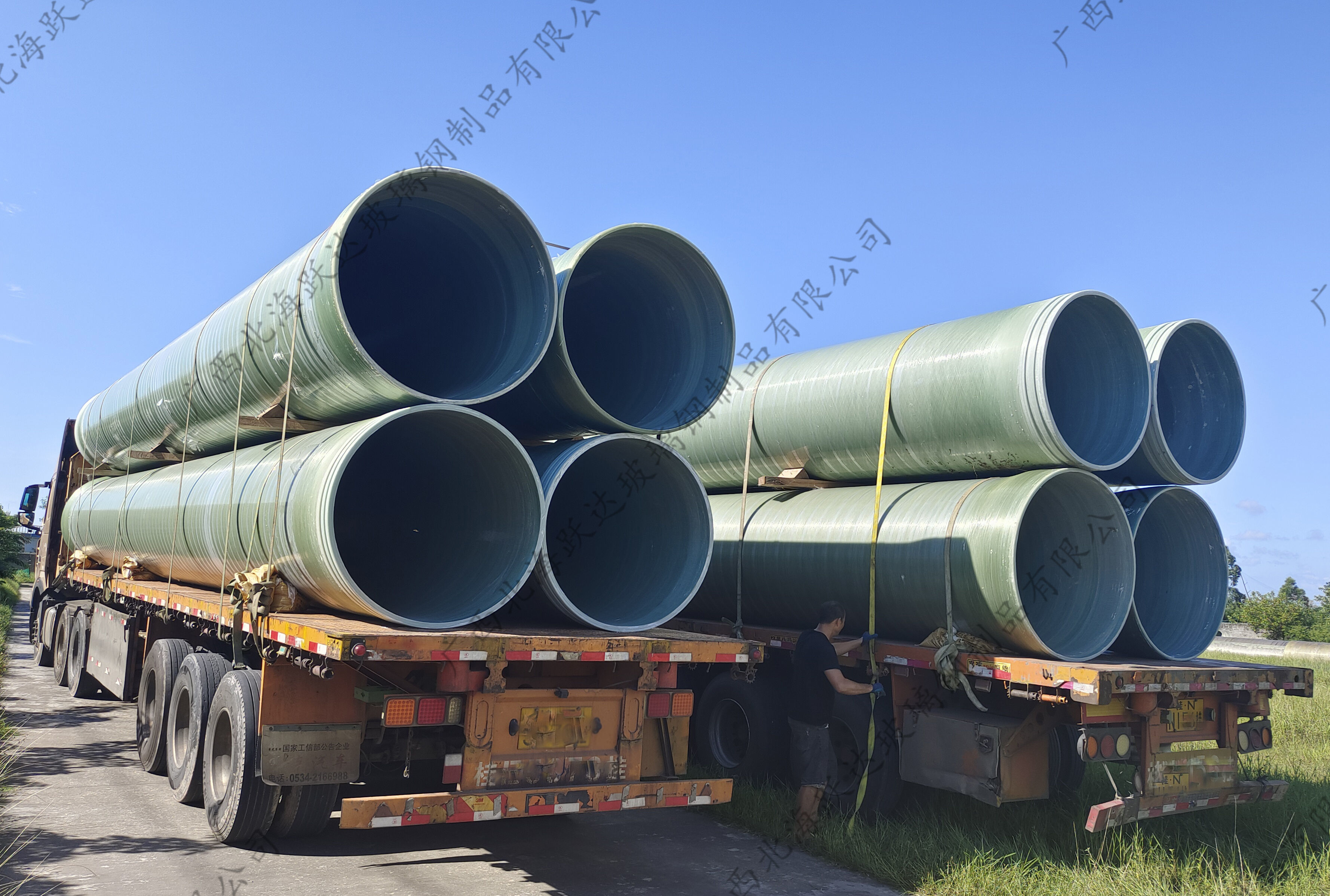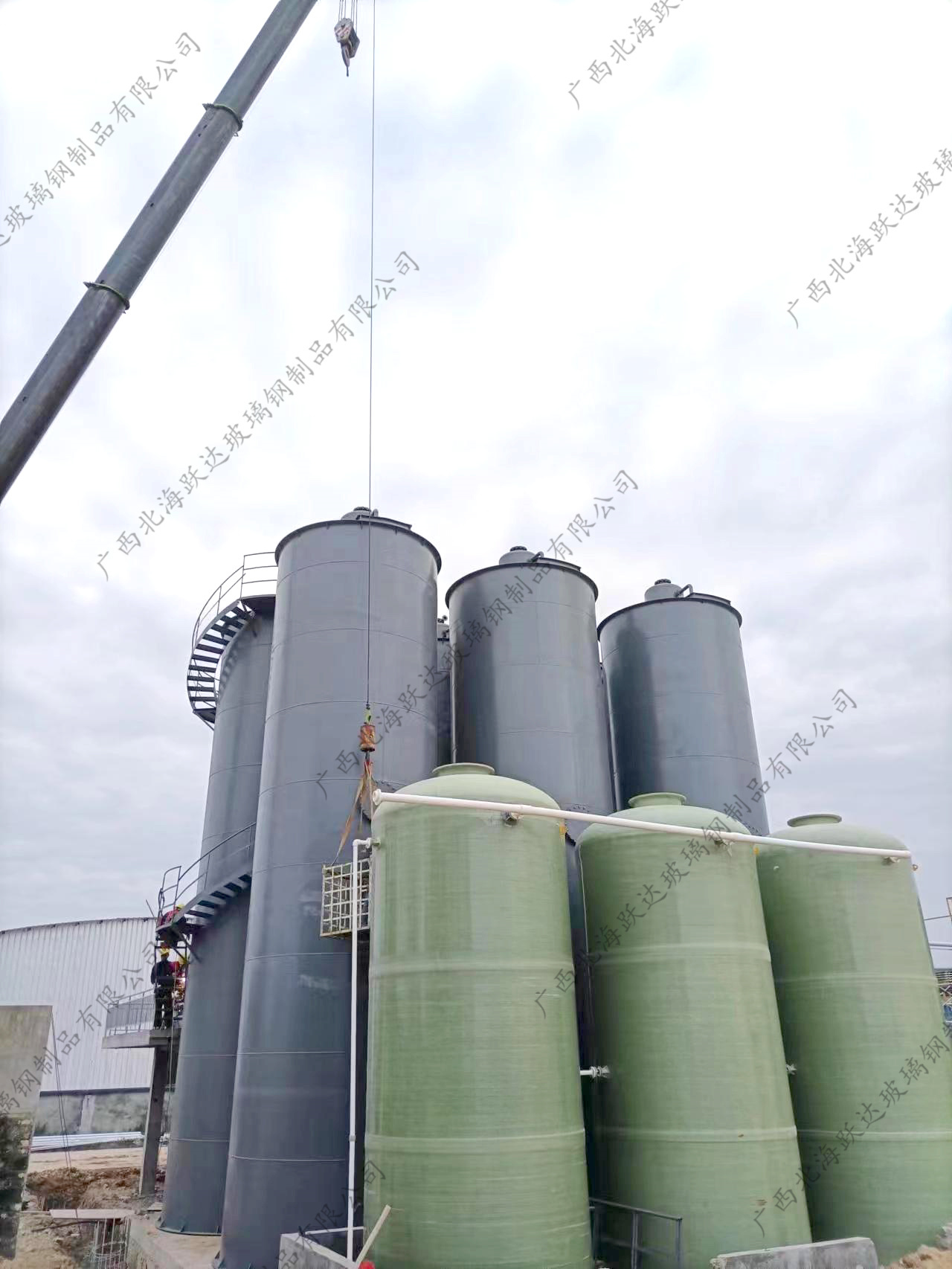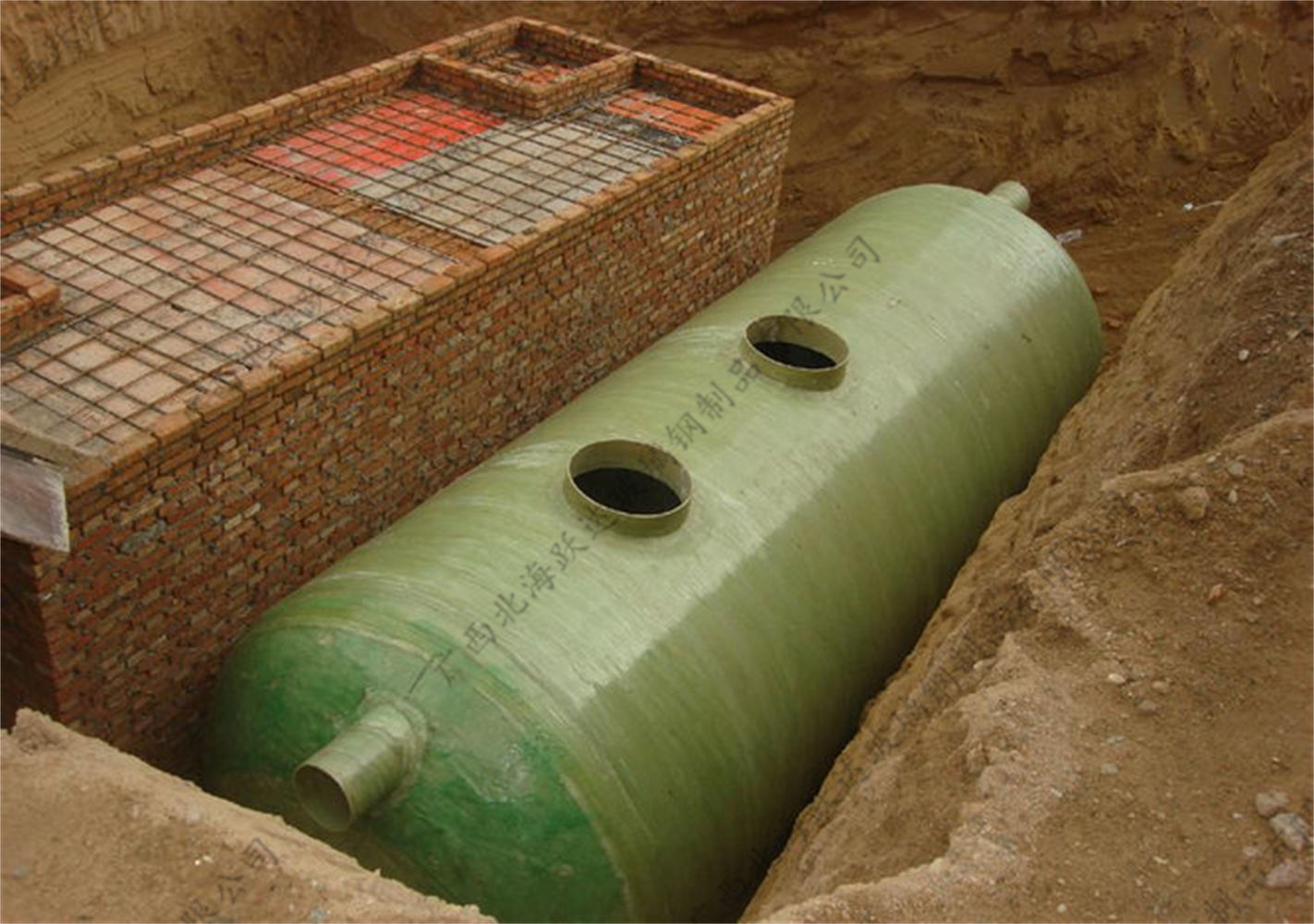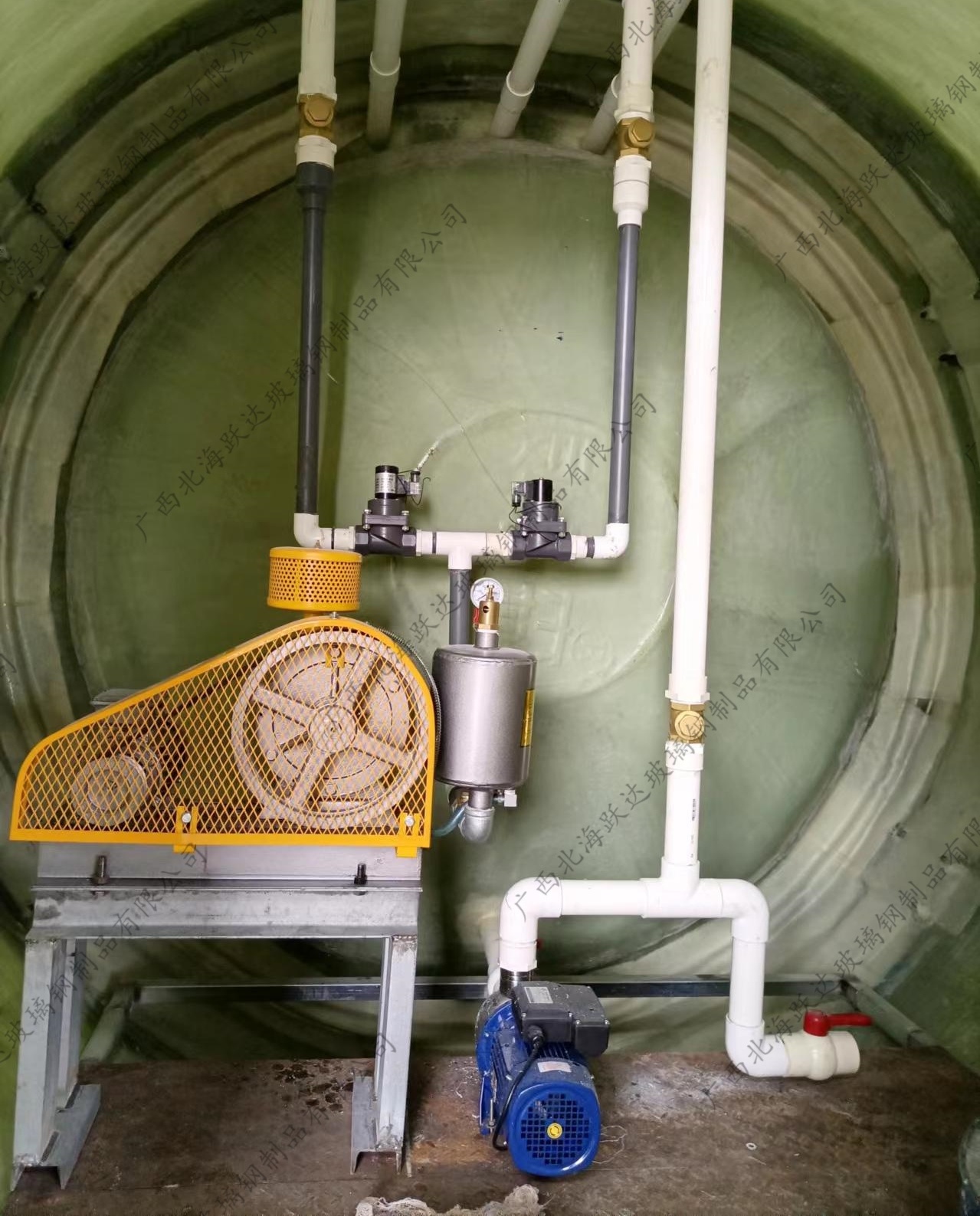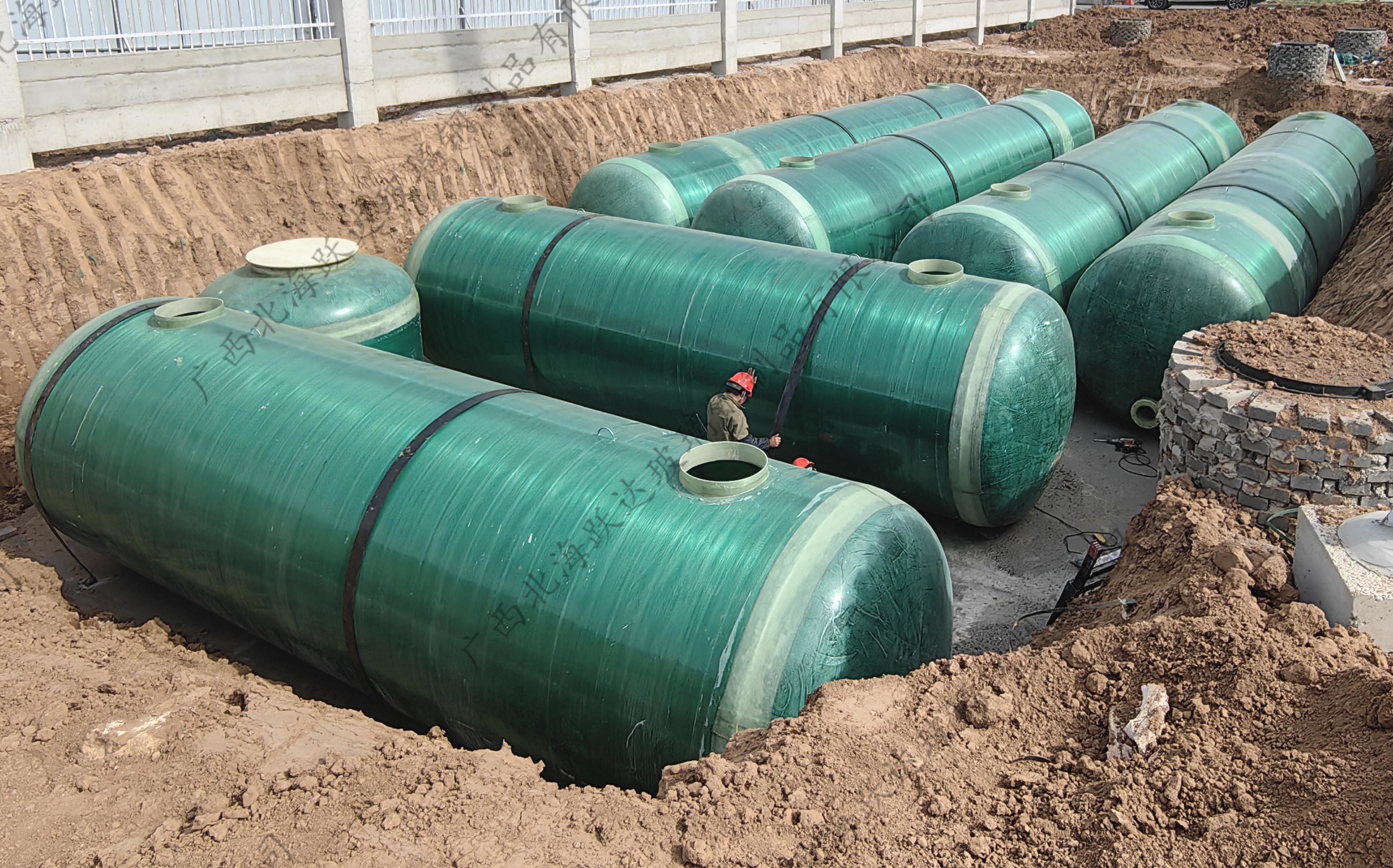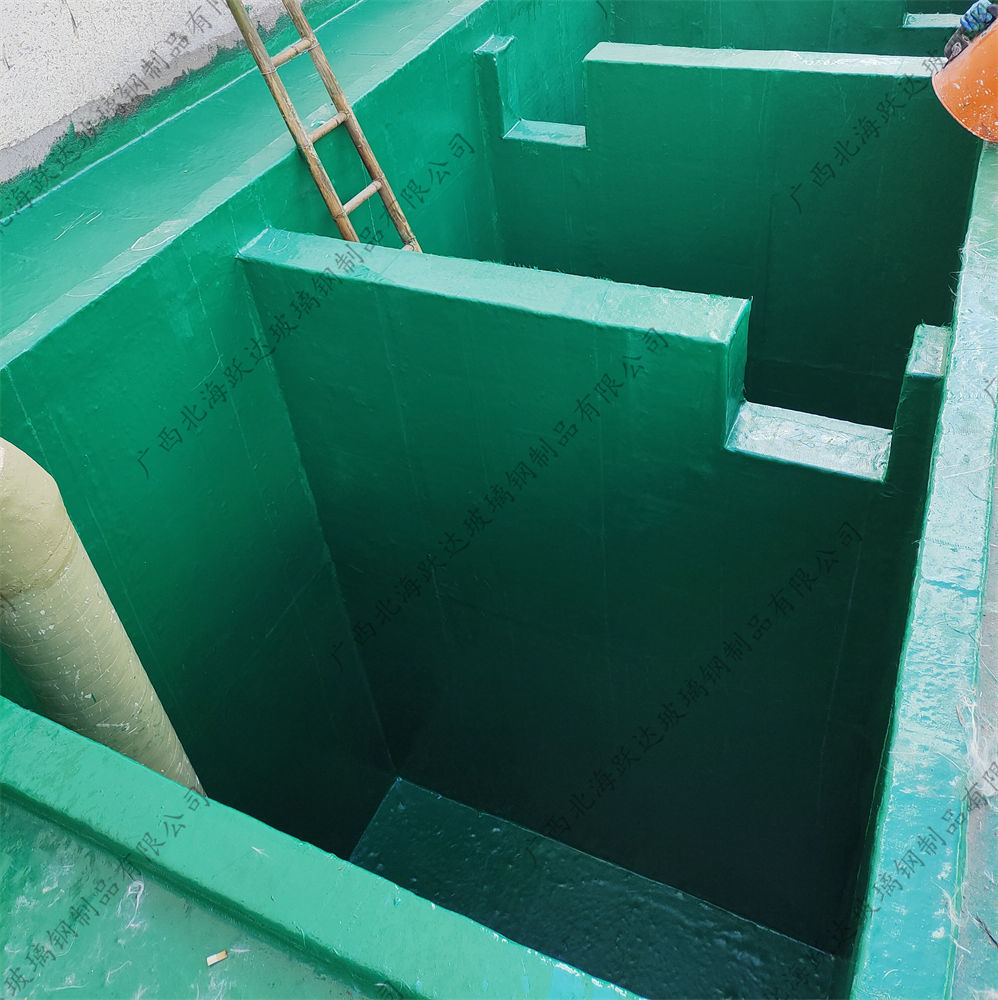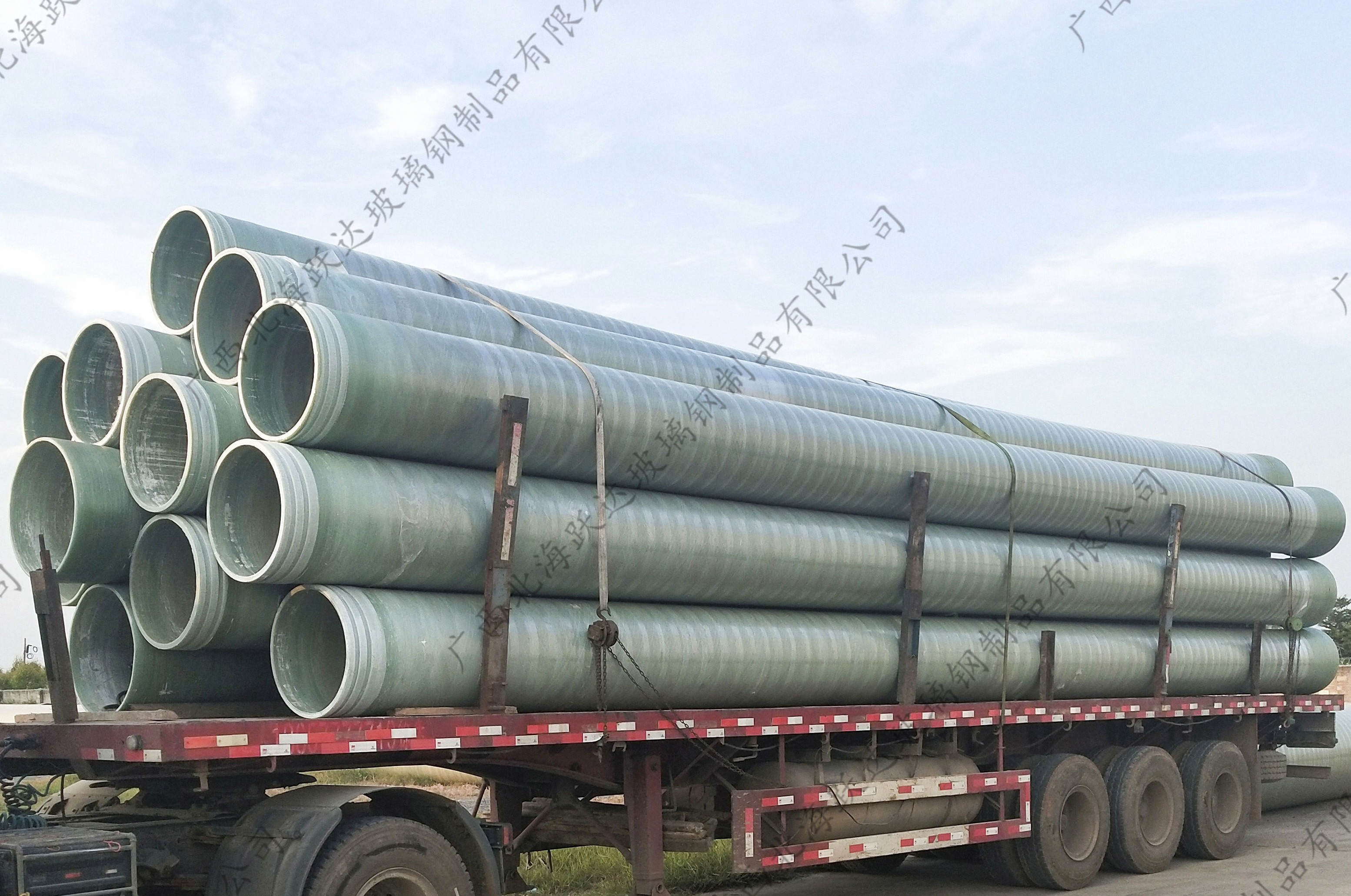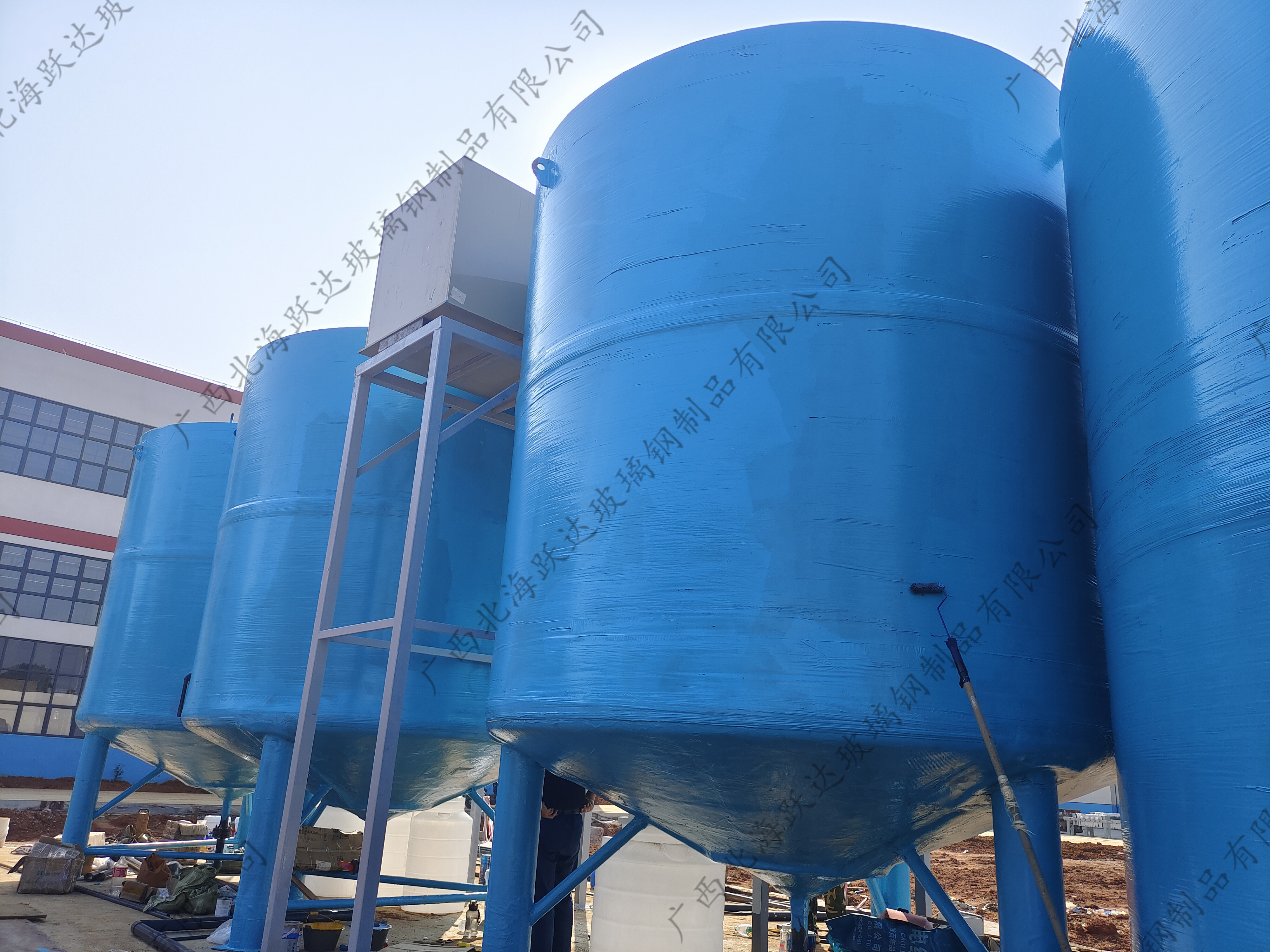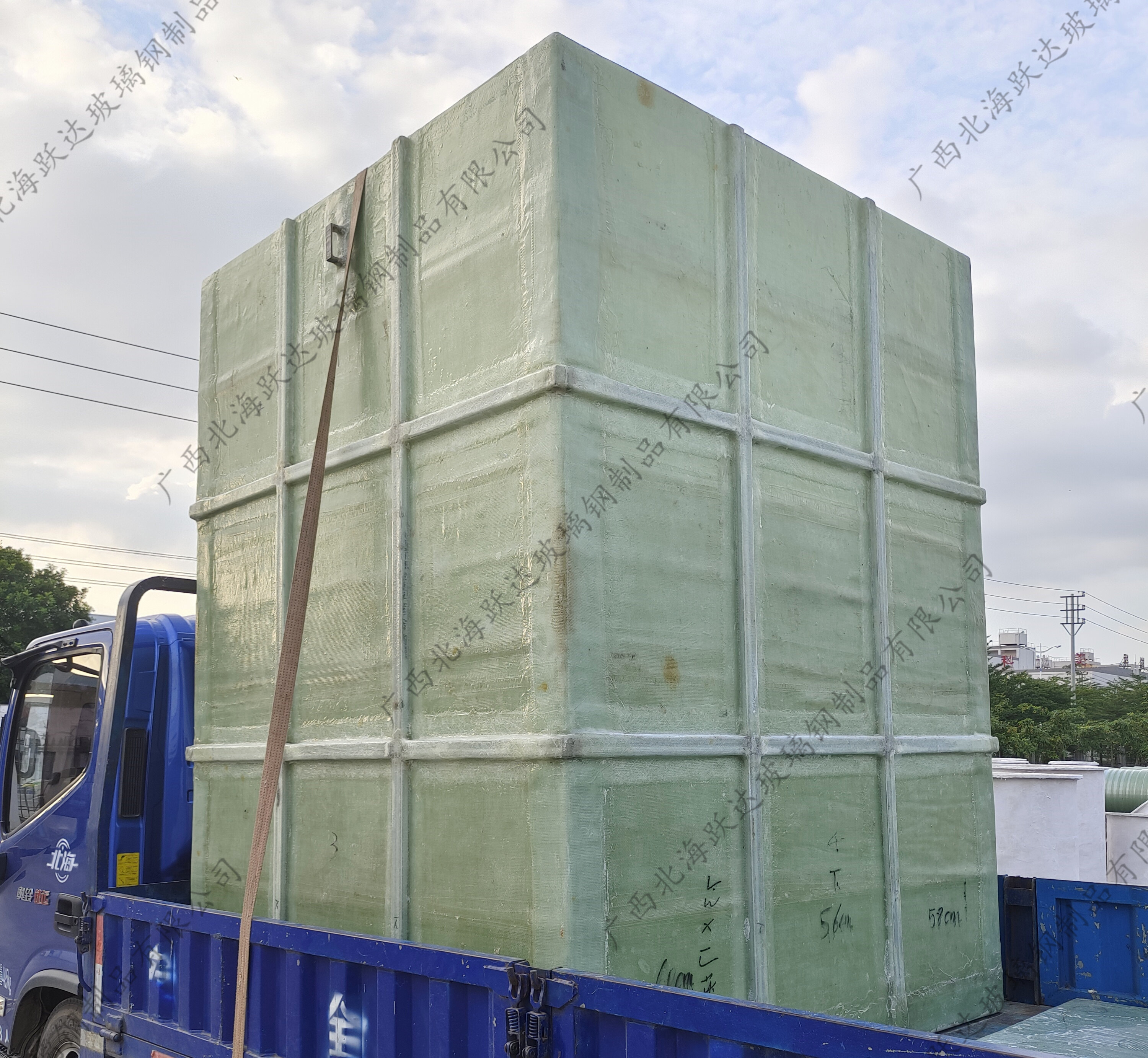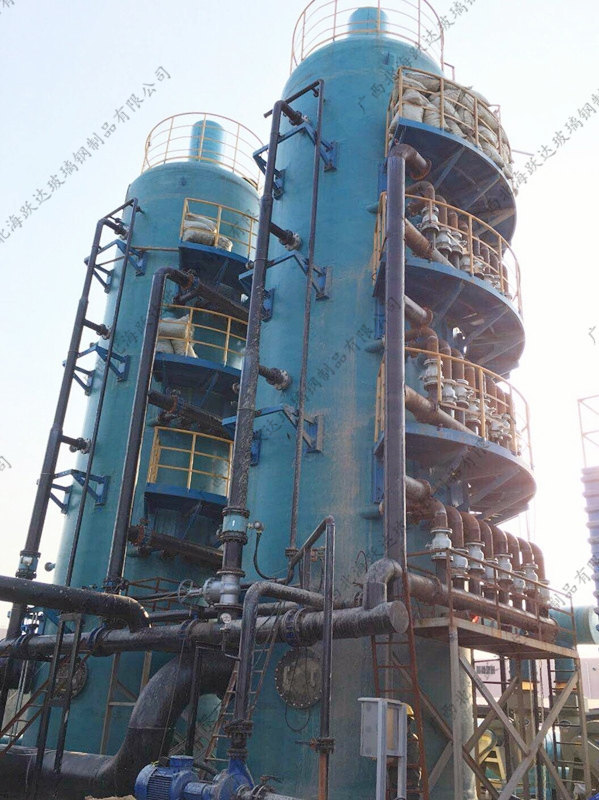Product classification
Fiberglass reinforced sand pipe
Fiberglass reinforced sand pipes are a new type of composite material made from resin as the matrix material, fiberglass and its products as the reinforcing material, and quartz sand as the filling material. With its excellent corrosion resistance, hydraulic characteristics, lightweight and high strength, large flow capacity, easy installation, short construction period, and low overall investment, it has become the best choice for the chemical industry and drainage projects.
Fiberglass reinforced plastic (FRP) process piping
1. Excellent Characteristics of Fiberglass Reinforced Plastic (FRP) Pipes
1. Lightweight and High Strength:
① Lightweight: The specific gravity of fiberglass pipes is about 1.6, which is only 1/4 to 1/5 that of steel or cast iron pipes. Practical applications show that under the same internal pressure, fiberglass pipes of the same diameter and length weigh about 30% of that of steel pipes. Because of this, fiberglass pipes can be transported in a nested manner, saving fuel and other costs. During installation, medium and small diameter fiberglass pipes generally do not require heavy machinery; some can even be handled manually, which increases installation speed.
FRP tanks are divided into vertical and horizontal mechanical winding FRP storage tanks, transport tanks, reaction tanks, and various chemical equipment. The horizontal FRP tanks, vertical storage tanks, transport tanks, containers, and large series containers are selected based on the medium used (for storage or transport), using epoxy furan resin, vinyl ester resin, modified or polyester resin, and phenolic resin as binders. They consist of a high resin content corrosion-resistant inner lining layer, a seepage prevention layer, a fiber winding reinforcement layer, and an outer protective layer.
The selection of fiberglass septic tanks is determined by the design parameters calculated by the design personnel of individual projects based on different buildings.
Fiberglass reinforced plastic wastewater treatment equipment
There are many types of wastewater treatment equipment, which can be classified into various categories based on different treatment processes and purposes. Among them, the most common are the following types:
Fiberglass Rainwater Collection System
The fiberglass rainwater collection system can be used for landscape irrigation, greening water, replenishing cooling circulation water treatment systems, car washing water, surface cleaning water, toilet flushing water, and fire-fighting water.
Fiberglass Integrated Pump Station
The fiberglass integrated prefabricated pump station is the ideal solution to replace traditional drainage pump stations, being an integrated pump station. The body of this pump station is made from advanced polymer composite materials through mechanical winding, offering advantages such as high strength, corrosion resistance, and aging resistance. The internal components, including pumps, pipelines, valves, instruments, control equipment, and other necessary accessories, are provided as a complete set and are tested before leaving the factory. It is a new type of integrated pump station equipment that is easy to use, reliable in quality, requires less civil engineering work, and has lower costs. Its most notable features are optimized volume and rapid construction.
Fiberglass reinforced plastic water tank anti-corrosion project
Chemical corrosion resistance, excellent physical properties, aging resistance, flame retardant, low thermal conductivity, flexible construction methods.
Fiberglass reinforced plastic sewage pipe
Advantages of fiberglass sewage pipes:
1. Excellent corrosion resistance
It has excellent mechanical properties and processing characteristics, resistant to most untreated wastewater from acids, alkalis, salts, seawater, corrosive soils, or groundwater, and many chemical substances.
2. Good heat and cold resistance
It still has good toughness and high strength at -30°C, can be used for a long time in the range of -50°C to 80°C, and special formula resins can even be used at 110°C.
FRP storage tanks are a type of fiberglass product, primarily made from fiberglass as a reinforcement and resin as a binder, manufactured through a winding process controlled by a microcomputer. FRP storage tanks have properties such as corrosion resistance, high strength, lightweight, and long service life. Additionally, due to their flexible design capabilities and strong processability, they can be tailored for use in various industries such as chemical, environmental protection, food, and pharmaceuticals, gradually replacing carbon steel and stainless steel in many market sectors.
Fiberglass water tanks are used in various industrial and civil construction applications for water supply, heating, and ventilation. They are characterized by a smooth surface, no cracks, and weld seams without bubbles.
The application range of fiberglass water tanks includes: fire protection systems, food and beverage industries, brewing, water treatment industries, as well as the pharmaceutical, petroleum, and chemical industries for the manufacturing of fiberglass water tanks.
1. The welding rod used is stainless steel ER308L, and the entire process employs tungsten inert gas (TIG) welding technology;
2. Before welding, the groove should be prepared according to the specifications of GB/T985-1998, and the external dimensions of the weld seam should comply with JB/T794-1999, ensuring there are no false welds or slag inclusions;
3. The arrangement of the internal lining structure should be uniform, with no burrs;
4. After the installation of the water tank, both the interior and exterior should be cleaned and decontaminated.
Fiberglass desulfurization tower
The principle of the fiberglass desulfurization tower is to utilize an alkaline solution to chemically react with sulfur dioxide in the flue gas, generating sulfate or sulfite, thereby removing sulfur compounds from the flue gas. In the fiberglass desulfurization tower, the alkaline solution is mixed with the flue gas through spraying, completing the chemical reaction in the packing layer or spray layer. The treated flue gas then passes through a demister to remove moisture, and finally is discharged into the atmosphere through a chimney.



